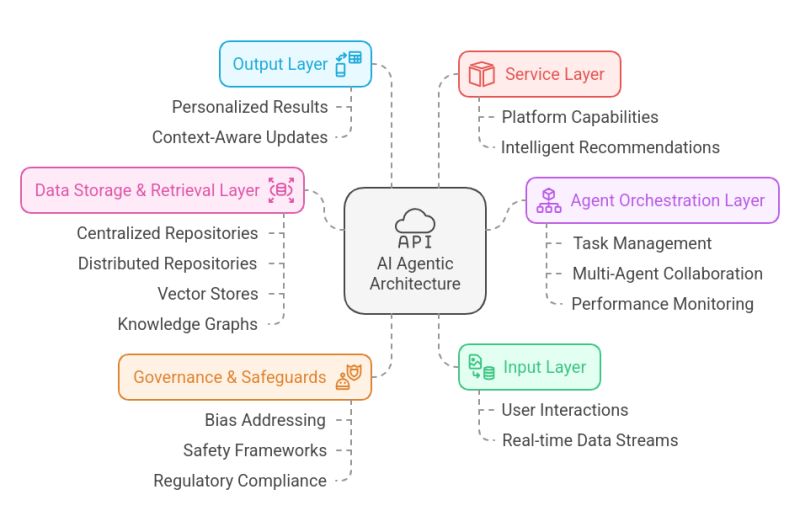- 24
- Apr
- 2025
Agentic AI Architecture An Implementation Summary
- Posted Byadmin
- InUncategorized

Agentic AI Architecture An Implementation Summary
Agentic AI systems act independently to achieve goals – they don’t just respond, they decide and do. Think of them as digital agents that can plan, act, and adapt without constant human oversight.
Architecture & Components:
Uses a “beehive” model where multiple specialized AI agents work together
Multi-layer architecture: input, orchestration, data storage, output, and services layers
Agents handle different tasks like data collection, decision-making, and code generation.
Key Components:
Worker Agents: Handle specific tasks (data collection, analysis, code generation)
Orchestrator Agents: Coordinate activities, like queen bees directing workers
Shared Resources: Common data storage and communication channels
How It Works:
Tasks are broken down into smaller components
Specialized agents handle each component
Agents communicate and share results
Orchestrator manages workflow and ensures goal completion
Agentic AI Architectures
There are a variety of architectural patterns employed in agentic AI systems:
Layered Approach: Organised into input, orchestration, data storage, output, and service layers.
Hierarchical: A supervisor agent manages other agents.
Decentralized: Functionality is distributed across specialized agents.
Emergent: Complex behaviours arise from the interaction of simpler agents.
Blackboard Systems: Sharing information through a common knowledge base.
These architectures maps onto current cloud-based technologies:
Microsoft Azure
Container Apps for Deployment
Service Bus for Asynchronous Communication
DAP (Data Access Platform) for Real-Time Agent Communication
OpenAI Service for Language Models
API Management for Security and Access Control
Amazon Web Services
AWS Fargate, Amazon Elastic Kubernetes Service (EKS), and Amazon Elastic Container Service (ECS)
Amazon Simple Queue Service (SQS) and Amazon EventBridge
AWS AppSync and Amazon API Gateway
Amazon Bedrock and Amazon SageMaker
Amazon API Gateway and AWS Identity and Access Management (IAM)
Conclusion:
Agentic AI represents a significant advancement in the field of artificial intelligence. By combining the adaptability of LLMs with the precision of traditional programming, it enables the creation of intelligent systems capable of autonomous action, complex problem-solving, and seamless integration across diverse environments. While there are challenges to overcome, the potential benefits of Agentic AI make it a key area of research and development for the foreseeable future, with early adopters poised to be the leaders in their fields. It’s essential to approach implementation with strong governance, a robust technology framework, and an awareness of the costs and ethical implications involved.